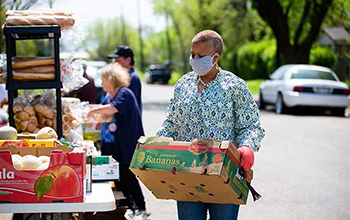Rural West Covid Project aims to provide new information on effects of the pandemic

Scientists are looking at the impact of the COVID-19 pandemic on the rural American West.
Much has been written about the impact of the COVID-19 pandemic on urban centers and suburbs across the United States, but less discussed is its impact on rural America, especially the rural West.
The Rural West Covid Project, led by Justin Farrell, a sociologist at Yale University, aims to close the data gap and provide policymakers and others with new information on rural Westerners' response to the COVID-19 pandemic.
"Economic relief programs that are designed to help get people back on their feet might not be well-tailored to rural areas if they don't have information about those rural communities to begin with," says Yale team member Kathryn McConnell.
The U.S. National Science Foundation-funded researchers have published a paper with results of their study in the journal Proceedings of the National Academy of Sciences. The scientists present results of their first survey of rural Western residents, which took place from June through July, 2020 by mail, text and phone.
"This research contributes to our understanding of the breadth and diversity of impacts the pandemic and associated measures have had on people and communities across our country," says Joe Whitmeyer, a program director in NSF's Division of Social and Economic Sciences.
More than 1,000 participants, including Latino and Native American respondents from 11 Western states, were asked questions about the pandemic's effects on changes in their health, economic situation and overall well-being.
At least one form of direct experience with COVID-19 was reported by 28% of respondents, and 52% of respondents reported some level of negative effect on their lives.
One in five people who were full-time employees before the pandemic started were no longer employed full-time when they filled out the survey. And unemployment increased by 9.74%.
Only 3% of respondents reported using unemployment benefits before the pandemic, but at the time of the survey, that number had risen to 12%. The increase was spread across the survey population, with no significant differences associated with gender, age, education or ethnicity.






